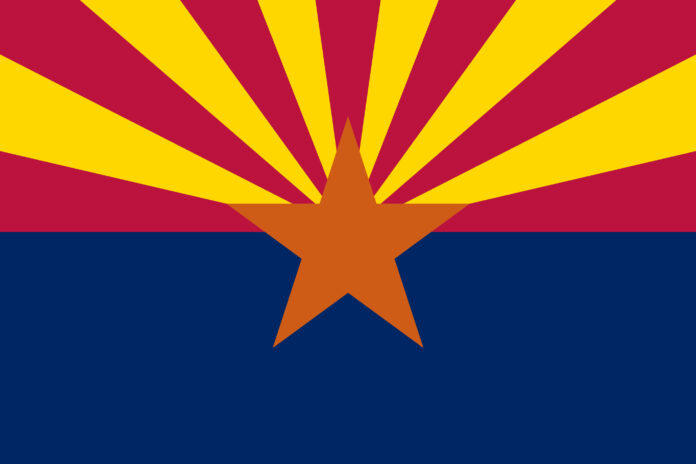Arizona, known as the “Grand Canyon State,” is a land of vast deserts, towering red rocks, and remarkable history. Located in the southwestern United States, Arizona is celebrated for its unique geography, rich cultural heritage, and diverse natural beauty. From the iconic Grand Canyon to its thriving urban centers like Phoenix and Tucson, Arizona offers a unique blend of natural wonders, Native American history, and modern-day advancements. This article dives into Arizona’s geography, history, cultural influences, famous landmarks, notable figures, and the state’s role in the broader American landscape.
Geography and Climate
Arizona is bordered by Utah to the north, New Mexico to the east, Nevada and California to the west, and Mexico to the south. Known for its arid climate, Arizona is part of the Four Corners region and home to a variety of ecosystems, including deserts, mountains, forests, and canyons.
- The Grand Canyon
One of the world’s most famous natural wonders, the Grand Canyon stretches 277 miles along the Colorado River and reaches depths of over a mile. Carved over millions of years by the river’s erosive force, the canyon reveals layers of geological history, providing a window into Earth’s past. It attracts millions of visitors annually, making it a major landmark and tourist destination. - The Sonoran and Mojave Deserts
Arizona’s deserts define much of its landscape. The Sonoran Desert, which spans the southwestern part of the state, is known for its iconic saguaro cacti, diverse wildlife, and unique vegetation adapted to the dry climate. The Mojave Desert in the northwest is characterized by its hot, arid climate and Joshua trees. - Mountain Ranges and Forests
Northern Arizona is home to mountains, forests, and cooler climates. The San Francisco Peaks, which include Humphreys Peak—the highest point in Arizona at over 12,600 feet—offer excellent hiking and winter sports opportunities. The state is also home to the Kaibab National Forest and parts of the Coconino National Forest, known for their ponderosa pine and diverse wildlife. - Climate
Arizona’s climate varies significantly by region. The desert areas in the south experience hot summers, with temperatures frequently exceeding 100°F, while winters are mild. In contrast, the higher elevations in the north have cooler summers and snowy winters, making Arizona a state of climatic diversity.
Early Inhabitants and Native American Heritage
Arizona’s history stretches back thousands of years, with the earliest inhabitants leaving a lasting cultural legacy.
- Ancient Civilizations
The Hohokam, Ancestral Puebloans, and Mogollon were some of the ancient cultures that thrived in Arizona. These civilizations developed advanced agricultural techniques, built complex irrigation systems, and constructed cliff dwellings and pueblos. The ruins at Montezuma Castle, the ancient cliff dwellings of Walnut Canyon, and the rock art of the Painted Rock Petroglyph Site offer glimpses into the lives of these early peoples. - Native American Tribes
Arizona is home to 22 federally recognized Native American tribes, each with its own distinct culture, traditions, and history. The Navajo Nation, which covers a large area in northeastern Arizona, is the largest Native American reservation in the United States. The Hopi, Apache, Tohono O’odham, and Yaqui are other notable tribes with deep connections to the land.- The Navajo: Known for their artistry, including intricate silver jewelry and traditional weaving, the Navajo have a strong cultural presence in Arizona. Their connection to the land and heritage is evident in landmarks like Monument Valley, a region considered sacred by the Navajo people.
- The Hopi: The Hopi people are known for their farming techniques and spiritual practices. They are skilled at cultivating crops in arid environments, and their ceremonial dances, including the famous kachina dances, are integral to their cultural identity.
The Spanish and Mexican Periods
In the 16th century, Spanish explorers arrived in the region, beginning an era of Spanish influence that would shape Arizona’s history.
- Spanish Exploration
In 1539, the Spanish priest Marcos de Niza and explorer Francisco Vázquez de Coronado traveled through Arizona in search of the legendary Seven Cities of Gold. Although they did not find riches, their explorations introduced European influence to the region. Spanish missions and settlements began to appear, as Spain sought to spread Christianity and establish control over the territory. - Mexican Independence and the Mexican-American War
In 1821, Mexico gained independence from Spain, making Arizona part of the Mexican territory. However, the Mexican-American War (1846–1848) ended with the Treaty of Guadalupe Hidalgo, in which Mexico ceded much of its northern territory, including Arizona, to the United States. The Gadsden Purchase of 1853 further defined Arizona’s borders.
Territorial Days and Statehood
Arizona became a U.S. territory in 1863, and settlers began moving into the region, drawn by opportunities in mining, ranching, and farming.
- Mining Boom
Arizona experienced a mining boom in the late 19th century, with the discovery of valuable minerals such as copper, silver, and gold. Towns like Tombstone, Bisbee, and Jerome grew rapidly, attracting miners and prospectors. Tombstone, in particular, became famous for its lawless reputation and events like the Gunfight at the O.K. Corral, featuring historical figures such as Wyatt Earp and Doc Holliday. - Ranching and Agriculture
Ranching also became a significant part of Arizona’s economy, with cattle ranches spreading across the state’s vast open spaces. Arizona’s climate allowed for the cultivation of crops such as cotton and citrus, especially in the fertile lands around Phoenix and Yuma. - Path to Statehood
Arizona’s journey to statehood was long and challenging. Despite its growing population, it remained a territory for decades. Finally, on February 14, 1912, Arizona was admitted as the 48th state, the last of the contiguous states to join the Union.
Modern Arizona: Economic Growth and Urbanization
Today, Arizona is known for its economic growth, thriving cities, and diverse industries.
- The Rise of Phoenix and Tucson
Phoenix, the state capital and largest city, has experienced rapid growth, becoming one of the largest metropolitan areas in the United States. Known for its sunny climate and desert landscape, Phoenix is a center for business, education, and culture. Tucson, home to the University of Arizona, is known for its arts scene, Mexican heritage, and beautiful surroundings in the Sonoran Desert. - Economy and Industry
Arizona’s economy has diversified over the years. The state remains one of the leading copper producers, but it has also become a hub for high-tech industries, aerospace, and tourism. Major companies, research facilities, and government agencies contribute to Arizona’s economy, creating jobs and fostering innovation. - Tourism
Arizona’s natural beauty and outdoor recreational opportunities make it a popular destination for tourists. The Grand Canyon, Monument Valley, Sedona’s red rocks, and Lake Havasu are just a few of the state’s famous destinations. The state’s rich Native American history and Old West heritage attract visitors from around the world, boosting Arizona’s tourism industry.
Cultural Highlights and Traditions
Arizona’s culture is a blend of Native American, Mexican, and Western influences, creating a unique identity that reflects its history and landscape.
- Native American Art and Traditions
Arizona’s Native American communities are known for their art, including pottery, weaving, jewelry, and sand paintings. The state hosts annual events like the Heard Museum’s World Championship Hoop Dance Contest, which celebrates Native American culture and traditions. - Mexican Influence
Arizona’s proximity to Mexico has influenced its food, festivals, and music. Traditional Mexican cuisine, from tacos and tamales to Sonoran hot dogs, is a staple throughout the state. Celebrations like Día de los Muertos and Cinco de Mayo are widely observed in cities like Tucson and Phoenix. - Western Heritage
Arizona’s history as part of the Old West is still celebrated in rodeos, cowboy poetry gatherings, and Western-themed events. Rodeos, including the famous Tucson Rodeo, honor Arizona’s ranching and cowboy traditions, and towns like Tombstone offer glimpses into the state’s wild past.
Notable Figures from Arizona
- Barry Goldwater
Barry Goldwater, a U.S. Senator from Arizona, was a prominent conservative politician and the Republican nominee for President in 1964. Known for his strong beliefs in limited government, Goldwater’s influence reshaped the Republican Party and left a lasting impact on American politics. - Cesar Chavez
Although born in Arizona, Cesar Chavez spent much of his life advocating for farm workers’ rights in California. As a labor leader and civil rights activist, Chavez’s work with the United Farm Workers helped improve conditions for migrant workers and inspired social justice movements. - Sandra Day O’Connor
Sandra Day O’Connor, born in El Paso, Texas, and raised in Arizona, became the first female justice on the U.S. Supreme Court in 1981. Her groundbreaking career and balanced judicial philosophy made her a respected figure in American legal history. - Geronimo
Geronimo, a prominent Apache leader, resisted Mexican and American expansion into Apache lands in the 19th century. His bravery and strategic skills made him a symbol of Native American resistance and resilience.
Arizona, with its stunning landscapes, diverse cultures, and deep historical roots, is a state that captures the spirit of the American Southwest. Its journey from ancient Native civilizations to a modern hub of economic growth and tourism reflects a unique blend of tradition and progress. Known for iconic landmarks like the Grand Canyon, vibrant cities, and a rich blend of cultural influences, Arizona remains a place of natural beauty and historical significance that continues to shape its identity and contribute to the broader American story.





